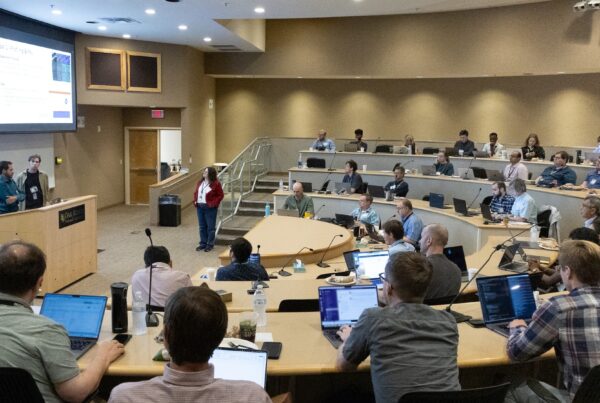Computational astrophysicist describes how and when Betelgeuse may become a supernova
On February 11, OLCF computational astrophysicist Bronson Messer described the impending death of a giant—a red giant star, that is.
Messer spoke on “The Fate of the Martial Star: How Will Betelgeuse Die?” at the University of Tennessee–Knoxville’s science forum. He addressed recent articles speculating that Betelgeuse is set to explode at some point in 2012. “That is possible—just as possible as the star living for another 10 million years,” Messer said.
Messer, currently the OLCF’s acting director of science, gave a crash course in astrophysics to an audience of about 30 students, faculty, and scientifically inclined members of the public and then delved right into the difficulties of simulating an exploding star 20 times as massive as our sun. Messer showed the audience simulations he is running on the OLCF’s Cray XT5 Jaguar—a supercomputer capable of more than two quadrillion calculations per second.
For perspective on the difficulty of these three-dimensional simulations, Messer explained that they depend on complex equations involving general relativity, weak forces, nuclear kinetics, and much more. In a star’s evolution from stable to supernova, the celestial body exhausts its hydrogen, helium, neon, oxygen, and silicon resources and finally begins burning iron. The inner core of the star becomes increasingly dense till the point at which 1 cubic centimeter—about the size of a sugar cube—weighs about the same as humanity collectively. — by Eric Gedenk






